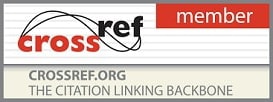Printed Journal | Refereed Journal | Peer Reviewed Journal
2024, Vol. 6, Issue 1, Part A
Review and Analysis on audio steganography techniques
Author(s): MC Basavaraja and Dr. Anitha Devi
Abstract:
The internet has become a crucial tool for modern society, allowing for instantaneous global contact and the sharing of vast amounts of information. Furthermore, we must take extra measures to ensure our safety while using the internet. When it comes to secure communication, steganography is a system that provides an improved secured approach. The Greek word steganos (meaning hidden or covered) is the root of the English word steganography. It hides the fact that we're trying to get in touch. Cryptography, on the other hand, provides a means through which the encrypted message can be deciphered. Steganography allows for not just non-repudiation but also confidentiality, authentication, and data integrity. Numerous studies on audio steganography exist. The purpose of steganalysis is to crack steganography and reveal hidden messages. Digital multimedia formats like audio, pictures, and video have become increasingly commonplace in the modern era, making them ideal for steganography. In order to determine if a suspicious communication contains a secret message, it is essential to be able to monitor this enormous multimedia as the user interacts with the outside world. Since there is a trade-off between capacity and invisibility, it is important to develop a strategy that maximises both features. The multi-objective evolutionary algorithm (MOEA) is a popular search tool for locating optimal solutions to the trade-off dilemma that arises in many different contexts. Using the MOEA Pareto dominance paradigm and the Non-dominated Sorting Genetic Algorithm-II (NSGA-II), this research proposed a novel strategy for optimising cover-audio selection in audio steganography. Based on inaudibility and storage capacity aspects, the proposed technique recommended cover audio to users. The sample difference formula was first developed to assess the size of the cover audio library. After that, NSGA-II was used to determine the most appropriate responses, this time factoring in the data provided by each chromosome. The new method additionally considered the fact that the trade-off resulted in the solution being chosen as the highest priority, whereas the previous method rated the same answer as low as position 71. The method improved the efficiency of the used audio steganography by optimising the cover audio chosen.
DOI: 10.33545/26633582.2024.v6.i1a.106
Pages: 22-29 | Views: 116 | Downloads: 51
Download Full Article: Click Here

How to cite this article:
MC Basavaraja, Dr. Anitha Devi. Review and Analysis on audio steganography techniques. Int J Eng Comput Sci 2024;6(1):22-29. DOI: 10.33545/26633582.2024.v6.i1a.106






